
No matter how careful we are, we all get injured sometimes. That includes our horses. Nothing is scarier than when your horse gets injured though. You want to do everything you can to make them feel safe and comfortable. Fortunately, with a little extra knowledge and the right tools, you can help. Here are the steps to take when your horse sustains any kind of injury from a mild scrape to a bone break.
When In Doubt, Call Your Veterinarian
A small scrape or cut can be treated at home, but any time there is a serious injury you need to immediately call your vet. It’s hard sometimes to tell the difference, but there are some obvious physical symptoms that will require a vet visit including:
- Obvious broken bones and other fractures
- Areas with a lot of swelling, throbbing, or very hot to the touch
- Deep cuts, puncture wounds, or heavy bleeding
- Injuries around the sensitive areas of the face, like the eyes, nose, and mouth
You’ll also want to be aware of the behavioral symptoms of an injury. They can often be hidden. Horses are pretty strong and will endure an injury in silence. Horses also can’t just tell us verbally when they’ve been injured, so we have to pay close attention to their behaviors. When a horse is acting strangely, it is possible they are injured. Some behavioral signs to watch out for include:
- Lethargy, depression, or unwillingness to do normal activities
- Lameness, unwillingness to carry weight, or not putting weight on certain body parts
- Isolating from other horses or acting cranky towards them
- Excitability, head shaking or tossing, and lying down and getting up repeatedly
In the case of severe injuries, you can provide first aid relief until the vet can come to help.
Basics Of Horse First Aid
I always recommend keeping a comprehensive horse first aid kit in the stable and taking a small version with you anytime you ride. These kits can be bought online or you can put them together with recommendations from your veterinarian. However, they typically all have the following items:
- Gauze pads
- Bandages
- Duct tape
- Leg wraps
- Fly mask
- Hoof testers
- A wound cleansing spray like Lavender Cleansing Spray
It’s also good to keep a pocket first aid guide, you can find them at any online bookstore. Make sure that any time you use something from your first aid kit you replace it, so you have it for the next time.
Emergency Horse Wound Care Tips
There are a few steps you can take to help your horse when they’ve sustained a major injury including:
- Stay calm. I know it is frightening when your horse is injured, but they are very perceptive. So if you panic, they’ll panic. Also make sure that your presence is known, if you startle them it could be dangerous for both of you.
- If possible, move them to a safe location where you can assess the injury. If you can, have someone assist you in the treatment of the injury.
- If possible, tie them up. Injured horses are very scared and may thrash in a way that can accidentally hurt you or themselves.
- Do an initial visual assessment of the injury and try to understand the extent.
- If there is heavy bleeding, you need to try your best to stop the bleeding until the vet comes. Wrap the wound with a – sterilized if possible – pressure bandage. If your horse bleeds through the bandage, add another. Don’t ever remove the first bandage.
- If there is an object embedded in your horse, do not try to remove it. Wait until the vet comes to take it out.
- If they sustained a bone break or twisted ankle, just try to keep them off the injured area until help arrives.
Emergencies can be scary to handle, but if you’re prepared you will be able to help.
Superficial Wound Care For Horses
If you find that your horse’s injury is a superficial wound like a small cut or scrap you can apply some basic first aid to help.
- Start by cleansing the wound. If the blood has dried, you’ll want to rinse the wound out. Cold distilled water is best for cleaning a small wound. Rinse the wound gently until all the dirt and debris is removed. If the wound is still bleeding, put on gloves, use a sterile gauze sponge to clean the area and gently apply pressure to help stop the bleeding. Do not press too hard.
- If the dirt and debris aren’t moving from rinsing, you will need to thoroughly clean the area with the gauze sponge. Be gentle and take your time. Make sure that you rinse the gauze sponge and the wound frequently to help remove the dirt.
- If the wound is very dirty, hose the area with cold water for a few minutes. Then apply warmer water. This will help loosen the dirt. Then, while wearing your rubber gloves and using the gauze sponge, clean the area with a sterile saline solution.
- Once the dirt is removed, apply Lavender Cleansing Spray to the area. Make sure to apply this astringent spray generously to help sanitize the area, prevent infection, and promote healing.
- Dress the wound accordingly with sterile bandages. Make sure to change the dressing frequently, as wounds attract nasty pests like flies. Continue to clean the wound and apply Lavender Cleansing Spray for a few days. One healing has begun, switch to The Balm! to help keep the area clean or germs and pests until the skin is fully healed.
During the healing process, you want to monitor your horse’s behavior and be extra careful to keep their stall clean. If you notice any signs of infection, such as swelling, lameness, irritability, or slow healing, speak to your vet.
Another great tip is to grab a copy of our Free eBook “Ancient Herbal Wisdom for Natural Horse Care.” It’s loaded with great natural remedies for other injuries and health concerns to keep your horse happy and healthy.
Though it can be really scary when your horse gets injured, if you are prepared you’ll be able to do everything you can to help them. These tips will get you started, but I highly recommend you do more research on your own. You can also look into your local annex to see if they offer horse first aid classes. If you can’t find a class, speak with your vet or farrier for guidance on what resources are available in your area.

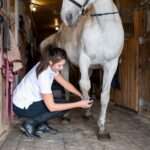

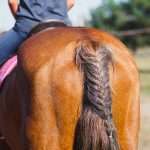

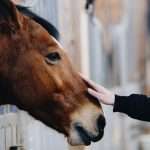
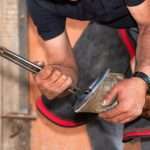

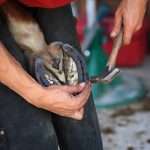


Buen reportaje, me encantan los caballos.
The veterinarian will be the one who will best advise you.
Good info every horse owner should know.
Interesting information. Thanks
We have an amazing vet who tends to our horses. Thanks for all the tips.
i once saw someone riding a horse with limp when i was in Iraq
it was so heart wrenching i wanted to do something but i couldnt do anything
Great information for horse owners. Thanks for sharing!
I can imagine the panic and fear when your horse gets injured . Great info for horse owners.
Very nice!
Suberp
This information seems really useful. I wish I had a horse, but I’m currently allergic to them.
I remember when my horse got grass colic after being let into a new field in the spring- scary moment for me, but the vet knew what to do!
Good tips for every horse owner.
Great information that everyone who has a horse should know.
Valuable information!
Nothing makes me sadder than an injured horse. Great advice!
Thanks for the information! It’s always so sad when one of your babies hurts themself!
Safety always matter!
I always call the Vet just to be safe.
i would add a few things to this,,,, but other wise great information
When working in Polo, it always broke my heart to see the horses get hurt. The vet was always at the barn like it was his second home.
Veterinarian would be first line of help tbh.
Good information for anyone who may need it.
more folks should read this….thank you